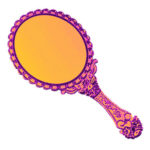
Critical Intuition
May 2019–July 2019
Eros is all of the life-preserving instincts, the impulses that exist to protect and preserve the body and mind. Eros is about forward momentum, survival. It’s an energy that sets us in motion, towards each other and towards the future. As Audre Lorde said in her speech before an audience of feminist thinkers & organizers in 1978: The erotic is power.1
“When I speak of the erotic,” she said, “I speak of it as an assertion of the lifeforce of women; of that creative energy empowered, the knowledge and use of which we are now reclaiming in our language, our history, our dancing, our loving, our work, our lives.”
Tapping into the erotic requires critical intuition — listening to the body, and a practice of seeking and receiving ancestral knowledge. Critical intuition is aware, perceptive, informed by our own cultural history, and leads to action — towards generative conflict, towards healing, towards decolonizing. What adrienne maree brown calls the erotic yes2 Lorde calls “a grave responsibility, projected from within each of us, not to settle for the convenient, the shoddy, the conventionally expected, nor the merely safe.”
The erotic experience contains the individual and the community; both joy and resilience; grief and celebration; cycles of birth, death, and rebirth; collaboration and creativity; deep participation; exodus and arrival. Eros is the impulse to travel and also the search for rest.
adrienne maree brown — the author of Emergent Strategy and Pleasure Activism — writes that “one taste of the truly erotic, the feeling of moving from a blank world to one full of color and sensation, makes it impossible to settle for suffering. it raises the bar on every aspect of life.”
This quarter artist in residence Adee Roberson presents colorful work on the diasporic movements of Black people — from Africa to the Americas, from the Carribean to the US. In the US, the Great Migrations — the historical mass exodus from the Jim Crow South to cities in the North and in the West — were not only manifestations of eros, of critical intuition, they made cultural movements like the Harlem Renaissance possible, which gave us artists like Zora Neale Hurston, Lorraine Hansberry, Augusta Savage, and more.3 Their choices to move away from oppression and towards self-preservation and expression made it possible for future generations of Black artists to thrive.
1 At the Fourth Berkshire Conference on the History of Women, August 25, 1978, Mount Holyoke College. The essay appears in full in Sister Outsider: Essays & Speeches by Audre Lorde (Ten Speed Press). We also recommend the version annotated by adrienne maree brown in Pleasure Activism (AK Press)!
2 adrienne maree brown discusses the “erotic yes” on pages (22-23) of Pleasure Activism.
3 Isabel Wilkerson wrote a great overview of the history and legacy of the Great Migrations for Smithsonian Magazine (“The Long-Lasting Legacy of the Great Migration”). She’s also the author of a book length work called The Warmth of Other Suns (Random House).
Artist in resident: Adee Roberson
June Events

Sex and Disability 101
Saturday, June 8, 1-3 pm
Presented by Cripping Up Sex with Eva
$10 Regular / $8 Members

Dreaming Awake on The Solstice: The Body as Portal
Thursday-Friday, June 20-21, 7–10pm
Presented by Blache Marie
$22 Regular / $18 Members

Sensopathy Landscape (a ritual spa)
Saturday, June 29, 5–8pm
Presented by Sarah Julig, Elizabeth Maldari, & Nancy Wong
Free / RSVP
May Events

WCCW Reading Series: Critical Intuition
Thursday, May 9, 7-9pm
Presented by Nina Rota & Bridgette Bianca
Free

Uses of the Erotic: The Erotic as Power
Thursday, May 23, 7:30-9:30pm
Hosted by The Free Black Women’s Library LA & WCCW
$2
